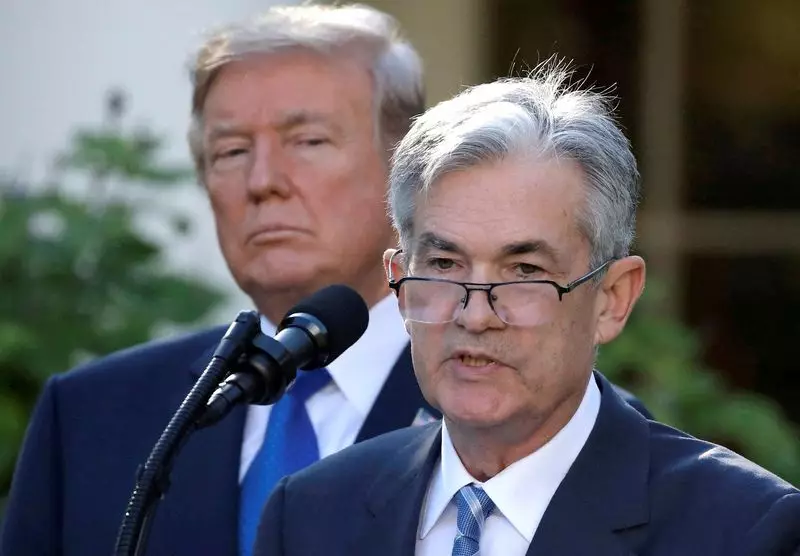In the aftermath of the recent elections, much has been discussed about the incoming administration’s economic policy direction. One key figure in this landscape is Jerome Powell, the Chair of the Federal Reserve, whose future under President-elect Donald Trump has been a topic of considerable debate. Despite their complicated history, Trump recently indicated that he does not intend to replace Powell upon taking office. This article delves into the potential implications of this decision for U.S. economic policy and the overall stability of the Federal Reserve.
Donald Trump’s relationship with Jerome Powell has been marked by tension and public confrontation. Initially appointed as Fed Chair in early 2018, Powell was expected to bring a moderate approach to monetary policy. However, as the economy evolved, their disagreements became evident. Trump’s administration faced significant challenges, especially concerning interest rate adjustments and their impact on economic growth. Trump’s repeated criticism of Powell, particularly during his tenure, represented a stark break from the tradition of presidential respect for the independence of the Federal Reserve. This historical context sets a stage for understanding Trump’s recent comments regarding Powell.
In a notable interview, Trump conveyed that he would not pursue Powell’s dismissal, countering speculation that he might act on his frustrations. Instead, he suggested that while he could potentially ask Powell to resign, the chair would likely resist such a request. Trump’s acknowledgment that Powell’s term extends until 2026 not only reinforces the legal constraints surrounding the Fed’s leadership but also reflects a calculated effort to maintain stability in a volatile economic environment.
Trump’s statement can be interpreted as a strategic acknowledgment of the limits of executive power when it comes to the Fed. The independence of central banking is crucial to maintaining investor confidence and managing inflation, a lesson that history has repeatedly underscored. Trump’s decision to avoid a contentious removal could signify a desire to focus on implementing his broader policy agenda without embroiling himself in a bitter battle over the Fed Chair.
As Trump prepares to advance his economic agenda, his promises to lower mortgage rates and borrowing costs for American households inevitably put him at odds with Powell’s cautious approach to monetary policy. The implication here is substantial: should Trump push for aggressive interest rate cuts to stimulate growth or facilitate borrowing, he might face pushback from a Federal Reserve committed to controlling inflation and preserving financial stability.
Compounding the situation is Trump’s intention to implement across-the-board tariffs, which could exacerbate inflationary pressures, further complicating Powell’s policy objectives. The economy’s current cooling labor market adds yet another layer of complexity, as traders anticipate a possible interest rate cut during the Fed’s upcoming policy meeting. This scenario underscores the precarious balance that Trump must maintain between his political aspirations and the operational independence of the Fed.
Legal and Institutional Pressures on Monetary Policy
It is critical to recognize that Powell has vehemently stated his intention to serve his full term, emphasizing that any attempt to remove him before its completion would be unlawful. This legal backdrop serves as a vital restraint against the kind of political maneuvering that has characterized prior administrations. Powell’s commitment to safeguarding the Fed’s independence highlights an essential aspect of central banking: the need for a degree of separation from political whims to effectively manage economic policy.
Moreover, Trump’s vulnerable positioning in advocating for policy changes amidst resistance from an independent Fed could lead to a strategy of indirect engagement rather than overt confrontation. The reality is that any significant shift in monetary policy will require collaboration, particularly in addressing the challenges posed by inflation, employment, and economic stability.
Trump’s current stance regarding Jerome Powell signals a pragmatic approach as he gears up for his new presidential term. By consciously choosing not to initiate a conflict over Powell’s position, Trump may be attempting to establish a collaborative relationship with the Fed in efforts to shape economic policy effectively. However, the interplay between Trump’s economic ambitions and the Fed’s mandate will continue to pose significant challenges. The coming months are likely to reveal how this complex landscape evolves as both entities work within their respective constraints to foster a stable economic environment.

